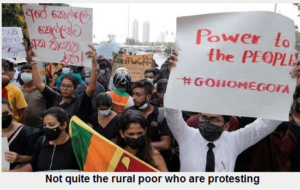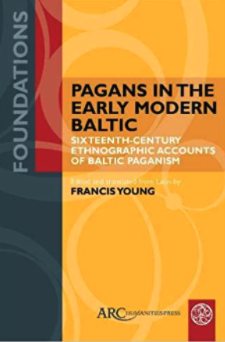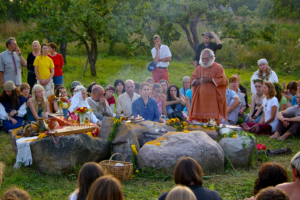Month: April 2022
Indus Valley on Tides of History
Patrick Wyman interviewing a specialist on the IVC. Pretty interesting, though I’m mildly skeptical of the idea of what seems like a pre-state primitive democracy being the political system in the IVC.
Sri Lanka: Mob Rule or Color Revolution
It’s Mob Rule in Sri Lanka. For its supporters it is a color revolution a la Ukraine Maidan in 2014 (more on that later). There are calls to hang and quarter President Gotabya Rajapakse. who was democratically elected by an overwhelming majority These are not sentiments of rural folk. It’s the call from Western leaning, educated urban affluent folk, plus those comfortably living in western countries. These are the types whose platitudes are about rule of law, democracy, guilty until proven and other trope.
But then the fruit does not fall from the tree does it. The tree been that beacon of democracy, the US. Just a few weeks ago there were calls for regime change, including assassination of a world leader, not just by some nonentity but by the leader of the “free” world and one of his senior member in the government.
Then of course there is the history, much to do with oil
Eg 1: Overthrow Assassination of the democratically elected Iranian PM Mosaddegh and the Shah being installed. When there was a popular revolution and a democratic government kept getting elected under theocratic oversight (no much different from UK monarchy) sanctions against were done done with the hope of regime change.
Eg 2 : Venezuela. Conspiracy theories of Chavez being murdered. However, very clear the US has continued using sanctions to attempt regime change and install a client Guido (is he from South Jersey). Note: Venezuela and Iran have been able to live with US sanctions because they are energy independent.
Eg 3: Korea the first division a la a possible Ukraine Vietnam, Kosovo, Libya, Iraq, Afghanistan, Syria almost all still occupied by the US/NATO
In Sri Lanka this is a class struggle, which the west oriented urban elite hope to regain power by other means That is not by democratic vote. The small vocal (in English) is extremely against the current regime. Not just against, a visceral hatred of the rural types, (godayas or bumpkins), much like visceral hatred of Russia or the rural Evangelicals and deplorables who support Trump. It is very evident in the language used against them, extremely discourteous to say the least. The Rajapakses have continued the pro rural people, socialist policies started by the Bandaranaike in 1956..The rural people (80 % of SL) are not happy. Who likes power cuts and shortages of diesel. But not to the extent of doing protest. They just need to cut firewood to cook.
The whole do a little protests and then go for sushi meal sums up the depth of these protests. Urban, affluent and no depth or “deep hunger” for change, so no real staying power or commitment. Much like Occupy Wall Street it will fizzle out.
Now the US connection: It’s no coincidence Victoria Nuland the architect of the Ukraine Maidan revolution visited Sri Lanka, India, Pakistan trying to drum up support for US sanctions against Russia. India said it was neutral and continued to import Russian crude. Same with Pakistan and Sri Lanka commenting they were neutral. Lo and behold a few weeks later a no confidence motion against Imran Khan the Pakistan PM, with rumors his party MP’s were bribed. The hope was that the pro US Pakistan army (they get lots of goodies from the US) would takeover. In Sri Lanka so called grassroots protests by the urban affluent for which none of the opposition parties claim responsibility.
So why the economic crisis in Sri Lanka. Lanka is being hit by a perfect storm.
a) The consequences of 2019 Easter bombing by Islamics and loss of tourism for three years (20% FX)
b) Economic shut down by a 1+ year lockdown because of Covid (30% FX, eg Garments)
c) Loss of mid east remittance for 2 years, as workers were sent back because of COVID fear. (30% FX)
d) And now having to pay for refined fuels and diesel shortages. Our only refinery Sapugaskanda built by the Iranians is to process Iranian crude or Russian crude.
In my opinion, fuel shortages are the biggest problem. 10 hour power cuts in urban areas. Lines to get diesel, petrol, kerosene and LPG if available. Again not too bad in rural areas. i.e. use firewood. I just built an outdoor fireplace.
Mid east workers started going back starting around Dec 2021. About 40 have left so far from the village.
Tourism had picked up in March. I was getting about 2 visitors a week, about a USD 200 income. Pre easter bombing in 2019 it was USD 600+. The rioting and power cuts are going to kill that goose.
Anyway this is democratically elected govt. Mob rule regardless of how urbane or affluent (and NOT representative of greater Sri Lnka) should not be allowed to stage coup or color revolution.
China: A Book and a TV serial..
I just finished Edward Rutherford’s “China, the novel” and enjoyed it. Capsule review:
![China: The Novel by [Edward Rutherfurd]](https://m.media-amazon.com/images/I/51OkcO-y3ZL.jpg)
This author writes sweeping sagas about particular places (London, New York) and clearly researches a lot before he writes. This one covers China from the first opium war to the end of the Qing dynasty. As usual, he has created characters (a British opium trader, a missionary, a Chinese mandarin, a Chinese rebel, a eunuch in the Manchu court, etc) that cover all important events (opium wars, Taiping rebellion, court intrigues, empress Cixi, etc). The book is a fun read and the history is well researched. While you can read many books about the history of the era, this one fills in the social mores, family dynamics etc in ways that a history text cannot. Well worth a read.

And happened to finish the overly long serial “Ruyi, Royal Love in the Palace” on Amazon Prime at the same time. This is a (very fictional) account of Ruyi, the Ula Nara empress in the reign of the Qianlong emperor. The details are ALL fictional, but the serial is lavishly produced and seems to capture the atmosphere of the harem (or what i imagine to be the atmosphere of the harem) very well. The novelist seems to have had some moral purpose in view, so the evil nature of the whole arrangement is perhaps a bit overdone (but it is also possible that in actual practice it was even more evil than this), and the serial is TOO long, going on for 87 episodes where 20 would have been more than enough. And some of the plot devices are also unrealistic (everyone is plotting, plots get discovered all the time, but the emperor never seems to take precautions against them; on the other hand, he too may be constrained the nature of the institution). But slowly but surely it does capture the terrible nature of this institution. Worth skimming through if you don’t have the time for a long soap opera.

How Indians view themselves vs. how Westerners view Indians

As A South Asian Woman, Seeing Two Darker-Skinned Women On Bridgerton Means Everything.
The headline is obviously a bit much. The casting of dark-skinned actresses of Indian-origin really isn’t going to change the norms of the Indian subcontinent, or the whole of Asia. But it’s an interesting window on aesthetic standards and cultural creation. Indians who I bring up this issue with routinely suggest “well, you don’t have ugly people in American films.” The implication for many people of subcontinental origin is that dark skin is ipso facto ugly (and in Asia more generally). This seems the ground truth and the rest is just commentary.
Open Thread – 4/1/2022 – Brown Pundits
 In the last week of this month I will be posting a podcast I did with Francis Young, author of Pagans in the Early Modern Baltic: Sixteenth-Century Ethnographic Accounts of Baltic Paganism (at my Substack). Over the hour and a half we talked about many topics, but one thing that struck me listening to him describe the details of the beliefs and practices of Lithuanian pagans, practices that persisted as living traditions centuries after the official Christian conversion of the state in ~1400 AD (Young estimates that in the 1500’s 30-40% of the population were what was then termed “Old Lithuanians,” baptized into Christianity but rural people who were almost totally uncatechized and continued to practice their ancestral religion), is how redolent they are of the Vedic religion. Young has convinced me that it is likely that the original Baltic branch of Indo-Europeans flourished somewhat to the south of their current distribution, which may be an outlier relic. If that is correct, they were likely positioned just to the west of the Indo-Iranian ur-heimat of the Fatyanovo-Balonov culture. Linguistically many scholars argue that Indo-Iranian and Balto-Slavic are a natural ‘clade’ within Indo-European languages.
In the last week of this month I will be posting a podcast I did with Francis Young, author of Pagans in the Early Modern Baltic: Sixteenth-Century Ethnographic Accounts of Baltic Paganism (at my Substack). Over the hour and a half we talked about many topics, but one thing that struck me listening to him describe the details of the beliefs and practices of Lithuanian pagans, practices that persisted as living traditions centuries after the official Christian conversion of the state in ~1400 AD (Young estimates that in the 1500’s 30-40% of the population were what was then termed “Old Lithuanians,” baptized into Christianity but rural people who were almost totally uncatechized and continued to practice their ancestral religion), is how redolent they are of the Vedic religion. Young has convinced me that it is likely that the original Baltic branch of Indo-Europeans flourished somewhat to the south of their current distribution, which may be an outlier relic. If that is correct, they were likely positioned just to the west of the Indo-Iranian ur-heimat of the Fatyanovo-Balonov culture. Linguistically many scholars argue that Indo-Iranian and Balto-Slavic are a natural ‘clade’ within Indo-European languages.
The Wikipedia entry on Lithuanian neo-paganism (Romuva) has a section titled “Relation with Hinduism”:
…But for Lithuania’s Romuva community, which traces its traditions back to ancient folklore, it is evidence of a connection to India, Hinduism and Sanskrit that has become a part of their Romuva identity, along with its pantheon of gods and fairly standard pagan rituals. Some believe that the connection between Hinduism and Romuva made Romuva to be more than a “primitive, shamanic religious tradition”…
…
Similarly Ašvieniai are divine twins in the Lithuanian mythology, counterparts of Vedic Ashvins. The Ašvieniai are represented as pulling a carriage of Saulė (the Sun) through the sky. Ašvieniai, depicted as žirgeliai or little horses, are common motifs on Lithuanian rooftops…
Romuva and Hindu groups have come together on numerous occasions to share prayers and participate in dialogue. These events have taken place in Lithuania, Atlantic City, New Jersey, Boston, Massachusetts, Epping, New Hampshire, and elsewhere.

I had assumed that Lithuanian Catholicism derived its strength from the Counter-Reformation period (the last sacred snake groves were destroyed by priests in the 18th-century), but Young explained that the reality is that Catholicism and the Lithuanian national identity became associated only with the absorption of Lithuania into the Russian Empire, where the dominant religion was Eastern Orthodoxy. It was in the context of religious and ethnic marginalization in the 19th century that the two elements of modern Lithuanian identity finally began to become synergistic, and therefore heterodox peasants began to finally adhere more strictly to a Catholic identity.